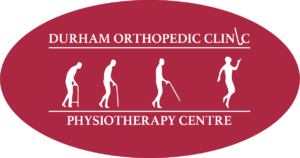Understanding Your Pain and Getting the Right Treatment
If you’ve ever felt a sharp pull or lingering ache in your upper thigh or near your pelvis, you’re not alone and you’re probably wondering if it’s a groin strain or a hip flexor injury.
The tricky part? They’re close in location, often share symptoms, and can both flare up from similar activities like running, kicking, or sudden directional changes. But understanding the difference is key to getting the right treatment and speeding up your recovery.
Let’s Break It Down:
What is a Groin Injury?
A groin injury usually involves a strain or tear to the adductor muscles, the ones on the inside of your thigh that pull your leg inward. These muscles are especially active in sports that require quick changes in direction, kicking, or skating.
Common signs of a groin strain include:
- Pain on the inner thigh or near the pubic bone
- Discomfort when bringing your legs together
- Tightness or bruising along the inner thigh
- Increased pain with stretching or side lunges
What is a Hip Flexor Injury?
Your hip flexors (mainly the iliopsoas and rectus femoris muscles) help you lift your knee and bend at the hip. These muscles are under constant use, whether you’re sprinting, climbing stairs, or just getting out of a chair.
Common signs of a hip flexor strain:
- Pain at the front of the hip or upper thigh
- Discomfort when lifting the knee (especially when walking uphill)
- Tightness or weakness during squats or lunges
- A “catching” or “pulling” feeling at the top of the thigh
So… Groin or Hip Flexor?
It all comes down to location and movement.
- If the pain is more medial (inner thigh) and worsens with side-to-side movements, it’s likely groin related.
- If the pain is more in the front of the hip or deep in the pelvis and worsens when lifting your leg, think hip flexor.
Still unsure? That’s where physiotherapy comes in.
How Physiotherapy Helps
At our physiotherapy clinic, we take the guesswork out of your recovery. We start with a detailed assessment to pinpoint the issue, and then create a treatment plan that might include:
- Manual therapy to relieve tension and improve mobility
- Targeted exercises to strengthen weak muscles and support recovery
- Stretching routines to improve flexibility without aggravating the injury
- Education so you know what movements to avoid (and which ones will help)
No matter which injury you’re dealing with, contact the professionals at Durham Orthopedic & Sports Injury Clinic to book your appointment today. Early treatment can speed up healing and help prevent it from becoming a chronic issue.


